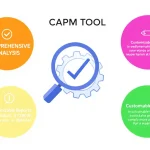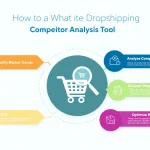Channel Strategy Generator
Is this tool helpful?
How to Use the Channel Strategy Generator Tool Effectively
The Channel Strategy Generator Tool helps you create tailored marketing plans that align with your product and target audience. Follow these steps to get the most from the tool:
-
Product Name: Enter the name of your product to customize the strategy. Examples:
– “SmartWave Wireless Earbuds”
– “PureGlow Organic Skincare Serum” -
Target Audience: Describe who your ideal customers are with details about demographics, interests, and behaviors.
Examples:
– “Millennial gamers aged 20-35, primarily male, interested in high-tech accessories and streaming.”
– “Young professionals aged 25-40, eco-conscious, favoring natural beauty products and wellness routines.” -
Product Features and Benefits: List what makes your product stand out and how it helps customers.
Examples:
– “Noise-canceling technology, long battery life, ergonomic design.”
– “100% natural ingredients, cruelty-free, improves skin hydration and elasticity.” -
Marketing Goals: Define what you want to achieve with your marketing efforts.
Examples:
– “Increase online engagement by 50%, grow email subscriber list by 15,000.”
– “Boost retail sales by 20% in the next six months, establish brand presence in health stores.” -
Budget Constraints (Optional): Include any spending limits to tailor channel recommendations economically.
Examples:
– “$25,000 for digital marketing over three months”
– “$10,000 monthly budget with flexibility across channels” -
Competitor Information (Optional): Share insights about competitor campaigns and focus areas.
Examples:
– “Competitor ‘SoundMax’ invests heavily in YouTube ads and podcast sponsorships”
– “Rival ‘NaturalLux’ uses Instagram influencer partnerships and in-store promotions”
After completing the fields, click the “Generate Channel Strategy” button. The tool analyzes your inputs and returns a customized channel strategy that guides you toward the most effective promotional avenues.
Introduction to the Channel Strategy Generator Tool
The Channel Strategy Generator Tool streamlines the process of crafting a detailed marketing channel plan for your product. This tool evaluates your product details, target audience, marketing objectives, and competitive environment to deliver actionable recommendations for marketing channels that fit your needs.
By focusing on both digital and traditional marketing options, it helps you reach your audience efficiently and boost your product’s visibility. The tool is built to save you time and offer practical, data-informed guidance tailored to your unique marketing context.
Purpose and Benefits
- Save time—skip lengthy research and planning by quickly generating channel strategies.
- Receive data-driven advice based on current marketing trends and best practices.
- Customize strategies to your product’s features, audience, and marketing goals.
- Explore a multi-channel approach that balances digital and traditional marketing.
- Gain competitive insight by considering your competitors’ marketing tactics.
- Optimize budget allocation to focus spending where it’s most effective.
- Adopt a holistic marketing perspective by leveraging synergies across channels.
Practical Uses of the Channel Strategy Generator Tool
This tool supports a wide range of marketing scenarios across industries. Use these examples to understand its practical applications:
1. Launching a Fitness App
Scenario: A startup is releasing a fitness tracking app aimed at young adults.
- Targets health-conscious millennials using social media and influencer marketing.
- Leverages email campaigns and app store optimization to increase downloads.
- Recommends partnerships with fitness bloggers and podcasts for increased reach.
2. Promoting an Artisan Coffee Brand
Scenario: A small business markets a new line of single-origin coffee blends.
- Identifies specialty coffee enthusiasts and local food communities as core audiences.
- Suggests using local events, farmers markets, and Instagram storytelling.
- Recommends email newsletters highlighting brewing tips and product launches.
3. Marketing a Cloud Security Software
Scenario: A B2B company offers cloud security solutions for enterprises.
- Focuses on LinkedIn and industry publications to reach IT decision-makers.
- Recommends webinars and whitepapers to demonstrate expertise.
- Advises attending trade shows and targeted email outreach for lead generation.
4. Advertising a Local Home Cleaning Service
Scenario: A local business wants to increase bookings for home cleaning.
- Targets busy families and professionals in the area through Facebook ads and Google local search.
- Suggests partnerships with neighborhood groups and local events.
- Encourages referral incentives and reputation management via online reviews.
Important Disclaimer
The calculations, results, and content provided by our tools are not guaranteed to be accurate, complete, or reliable. Users are responsible for verifying and interpreting the results. Our content and tools may contain errors, biases, or inconsistencies. Do not enter personal data, sensitive information, or personally identifiable information in our web forms or tools. Such data entry violates our terms of service and may result in unauthorized disclosure to third parties. We reserve the right to save inputs and outputs from our tools for the purposes of error debugging, bias identification, and performance improvement. External companies providing AI models used in our tools may also save and process data in accordance with their own policies. By using our tools, you consent to this data collection and processing. We reserve the right to limit the usage of our tools based on current usability factors.







